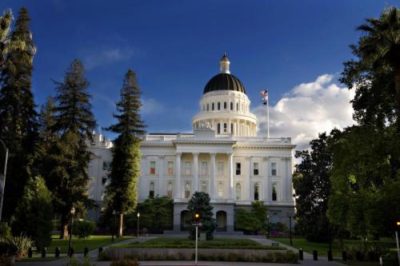SB 32 Passage Great News But Legislature Needs to Pass AB 197 Too
AB 197 Would Curtail California Air Resources Board Power, Potentially Restrict Cap-and-Trade
 Ethan reported the good news today that the California Assembly passed SB 32, legislation that would extend California’s landmark climate change legislation to 2030 and require deeper cuts in emissions. The original legislation, AB 32, required that California cut its emissions to 1990 levels by 2020. SB 32 requires that the state achieve a 40 percent reduction of the state’s greenhouse gas emissions below 1990 levels by 2030. The Assembly vote today to pass SB 32 was a huge (albeit narrow, by only one vote) victory — the Assembly rejected the bill last year, though it has since been amended to eliminate a requirement that the state reduce petroleum usage by 5o percent by 2030. But SB 32 contains a very odd twist: as Ethan updated his post to note, the bill will not take effect, even if signed by the Governor, unless the Legislature also passes AB 197 before January 1, 2017.
Ethan reported the good news today that the California Assembly passed SB 32, legislation that would extend California’s landmark climate change legislation to 2030 and require deeper cuts in emissions. The original legislation, AB 32, required that California cut its emissions to 1990 levels by 2020. SB 32 requires that the state achieve a 40 percent reduction of the state’s greenhouse gas emissions below 1990 levels by 2030. The Assembly vote today to pass SB 32 was a huge (albeit narrow, by only one vote) victory — the Assembly rejected the bill last year, though it has since been amended to eliminate a requirement that the state reduce petroleum usage by 5o percent by 2030. But SB 32 contains a very odd twist: as Ethan updated his post to note, the bill will not take effect, even if signed by the Governor, unless the Legislature also passes AB 197 before January 1, 2017.
And AB 197 is, in some ways, where all the action is. The bill, authored by Assemblyman Eduardo Garcia (D-Coachella), would curb some of the authority of the California Air Resources Board to implement greenhouse gas emissions reductions. The original climate change legislation setting the 2020 target, AB 32, gave ARB a remarkable amount of power to figure out how to meet the goal. Though the legislation provided some guidance and some limitations, it largely left ARB to determine how the cuts would be made and from which sectors. ARB has enacted a sweeping set of policies that includes a cap-and-trade program but also a number of other ambitious programs, including a Low Carbon Fuel Standard for transportation fuels. AB 197 would limit ARB’s authority in several ways. First, it would establish a legislative oversight committee to which the Chair of ARB would report once a year. Second, the bill would add two ex-officio members of the legislature to the air board and make the terms of voting members six years. And third, the bill would require ARB, in implementing the 40 percent target, to prioritize emissions reductions to:
consider the social costs of the emissions of greenhouse gases, and prioritize ….(a) Emission reduction rules and regulations that result in direct emission reductions at large stationary sources of greenhouse gas emissions sources and direct emission reductions from mobile sources.
Reader Comments
2 Replies to “SB 32 Passage Great News But Legislature Needs to Pass AB 197 Too”
Comments are closed.







So did you see my comments on Ethan’s post? 🙂
Oh, I see Ethan did. 🙂